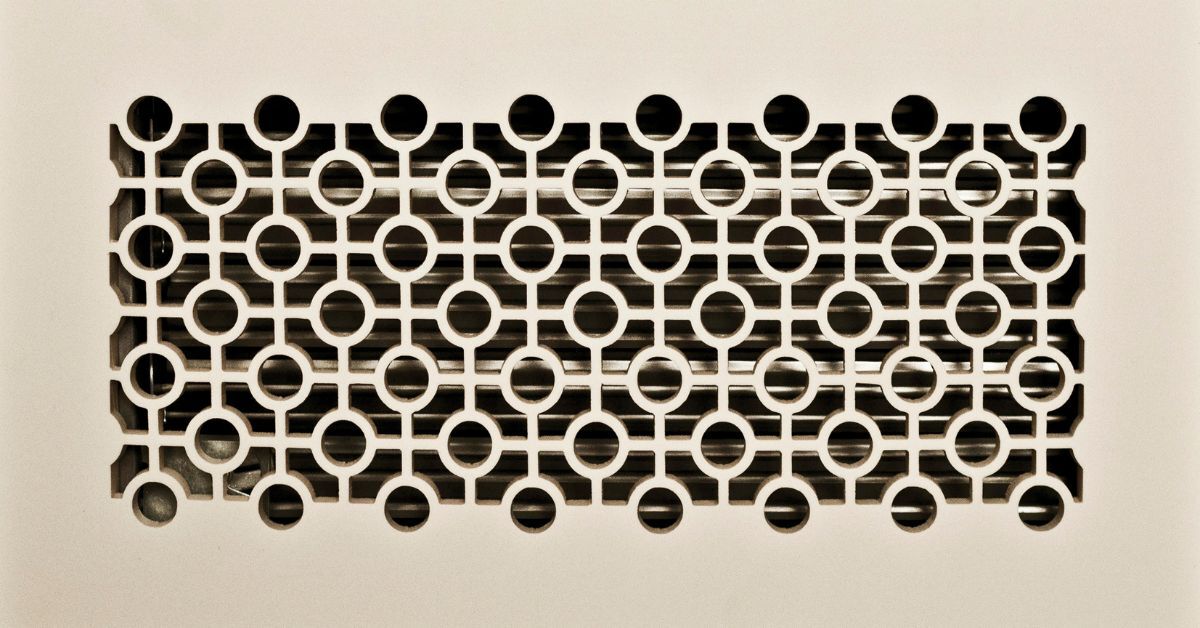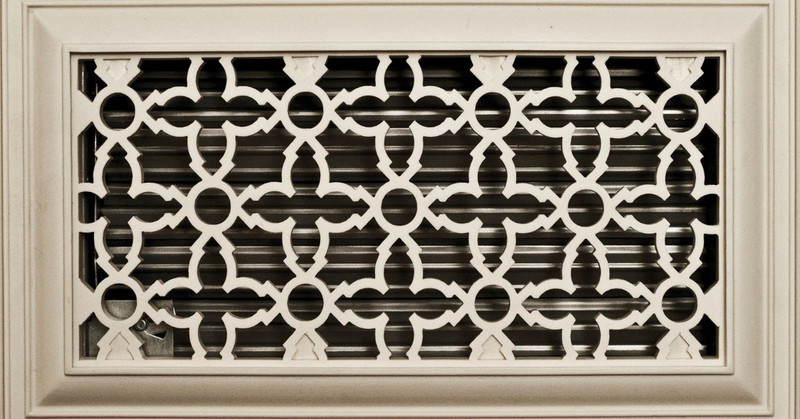Selecting the right wall register may seem simple, but it plays a crucial role in maintaining indoor comfort, energy efficiency, and overall home design. Whether you’re building, remodeling, or upgrading your HVAC system, your wall register choice can impact airflow distribution, aesthetic appeal, and even indoor air quality. With so many styles, materials, and functions available, making the right selection requires thoughtful consideration. Read on to learn some tips for choosing the right wall register for your home.
Understand the Purpose of Wall Registers
Before you buy, you need to understand what wall registers do. They’re not just vent covers—they regulate airflow from your HVAC system into a room. A quality wall register allows you to control the volume and direction of heated or cooled air, keeping each room comfortable. Some even include dampers that let you shut off air in rooms you don’t frequently use. Choosing a register designed for proper airflow improves energy efficiency and helps your HVAC system operate at peak performance. Consider your home’s heating and cooling needs before settling on a register style.
Measure the Duct Opening, Not the Old Register
One of the most common mistakes homeowners make is measuring the old register instead of the duct opening. Register sizes depend on the duct opening they cover, not the overall size of the faceplate. Measuring the duct ensures you purchase the correct size for a secure fit. Grab a tape measure and write down the width and height of the opening. Then, double-check your measurements before ordering. A register that’s too small or too large won’t function properly and could negatively impact airflow and system efficiency throughout your home.
Choose the Right Material for Durability
Wall registers come in a variety of materials, each offering unique benefits. For those looking for something that will last, our specialty heat-resistant resin vents should be your first choice. This material can withstand high temperatures without compromising structural integrity, making it ideal for vents installed in areas exposed to heat. Made of polyurethane, a type of highest quality plastic, these grills will never crack, giving you excellent value for your money.

Look for Adjustable Dampers for Airflow Control
Adjustable dampers are essential for homeowners who want better control over airflow in each room. These dampers allow you to regulate how much air passes through the register, making it easier to maintain a consistent temperature throughout your home. They’re especially helpful in rooms that tend to run hot or cold compared to the rest of the house. Some dampers have a lever or dial control, while others are fully automated. Prioritizing airflow control will improve comfort and enhance your HVAC system’s efficiency year-round.
Prioritize Aesthetic Appeal To Match Your Design
Registers are a visible part of your home’s interior, so their appearance matters. You don’t want a cheap, plastic vent detracting from your carefully curated decor. Wall registers come in various finishes—brushed nickel, oil-rubbed bronze, white enamel, or natural wood—allowing you to choose one that complements your home’s style. For modern homes, sleek, minimal designs work best. In contrast, ornate grilles add elegance to traditional spaces. Matching your register design to your decor creates a seamless look while ensuring the vent performs its job effectively.
Consider Placement for Maximum Efficiency
Where you place your wall register affects its performance. You should have registers installed strategically to balance airflow and prevent hot or cold spots. Typically, they’re on exterior walls to offset drafts or heat loss. Consider furniture placement to avoid blocking airflow and diminishing efficiency. If installing in an existing home, evaluate current ductwork and decide if relocating registers could improve air circulation. Optimal placement ensures rooms heat and cool evenly, saving on energy costs and providing consistent comfort throughout the year.
Factor in Ease of Maintenance and Cleaning
Wall registers collect dust, dirt, and pet hair over time, which can restrict airflow and reduce indoor air quality. Choosing a register design that’s easy to remove and clean will save you time and effort. Models with a simple lift-off faceplate or removable grilles make regular cleaning less of a chore. Avoid overly intricate designs that trap dirt in hard-to-reach crevices. A register that’s simple to maintain will keep your HVAC system running efficiently while also supporting a healthier living environment for your family.
Check Compatibility With HVAC System Specifications
Not all wall registers work universally with every HVAC system. Some systems require high-velocity registers, while others need low-resistance designs to function optimally. Check your HVAC system’s specifications or consult a professional to ensure compatibility. Improper register selection can restrict airflow, overwork your system, and even shorten its lifespan. Also, consider the static pressure impact of your register choice, especially if you’re remodeling or changing register locations. Proper compatibility ensures long-term performance and prevents costly energy waste or system repairs down the line.

Explore Energy-Efficient Models
Energy-efficient registers minimize heat loss or air leakage, improving overall HVAC performance. Models with tighter seals or built-in insulation reduce energy costs, especially in homes with long duct runs or older systems. Some modern registers feature smart technology, allowing for automated adjustments based on room temperature or occupancy. While these may cost more upfront, the energy savings over time can be significant. Investing in efficiency-focused registers contributes to better environmental sustainability while also lowering monthly utility bills.
Think About Noise Levels and Sound Dampening
Air rushing through vents can create noise, especially if the register design amplifies airflow turbulence. To avoid unwanted whistling or rattling sounds, choose wall registers with smooth internal surfaces or sound-dampening features. Quality materials and precise construction reduce the risk of vibration or loose parts that might cause noise as air passes through. Quiet operation is particularly important for bedrooms, offices, or media rooms where noise distraction is unwelcome. Taking sound into consideration enhances comfort and creates a more peaceful living environment throughout your home.
Don’t Overlook Ceiling and Wall Registers Compatibility
Many homes use both ceiling and wall registers for proper air distribution. Ensuring compatibility between the two enhances your HVAC system’s overall performance. If your home design calls for both types, look for models that share similar materials, finishes, and damper functionality. Matching styles create a cohesive aesthetic throughout your home. In addition, understanding how ceiling and wall registers function together avoids airflow imbalances. Whether cooling from above or heating from the side, balanced design and functionality between these two types ensure comfort and efficiency year-round.
Now that you know how to choose the right wall register for your home, you can make informed decisions that balance function, style, and efficiency. From measuring your duct openings accurately to considering safety features and matching ceiling and wall registers, every detail impacts your home’s comfort and air quality. Taking the time to evaluate these factors ensures your HVAC system runs smoothly, your interior design shines, and your household stays comfortable season after season.

